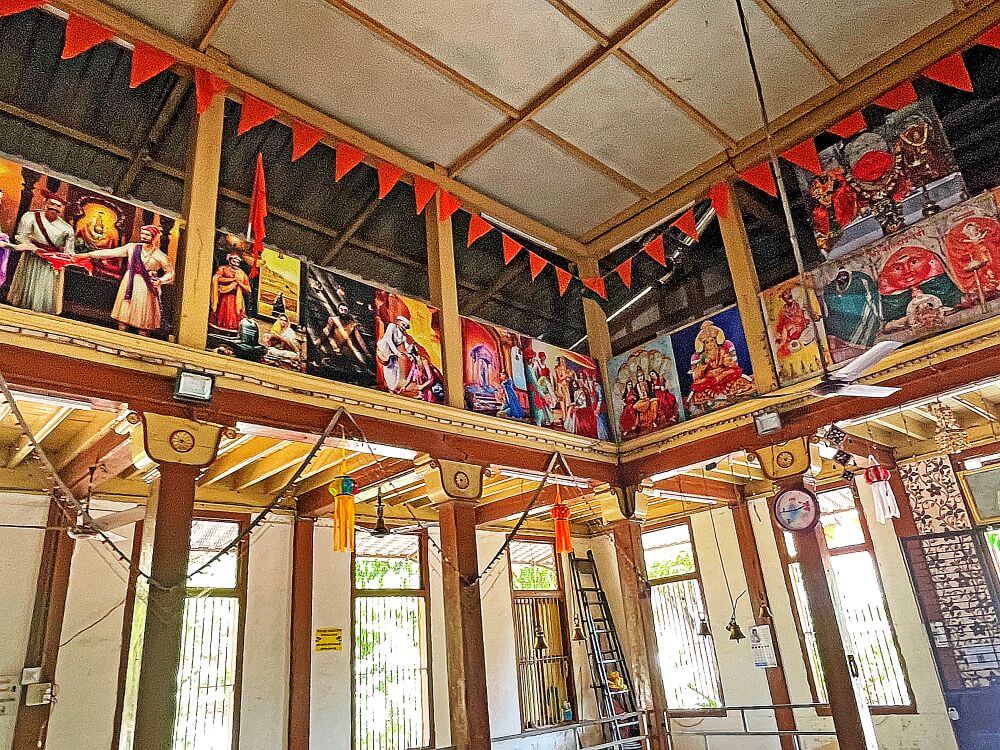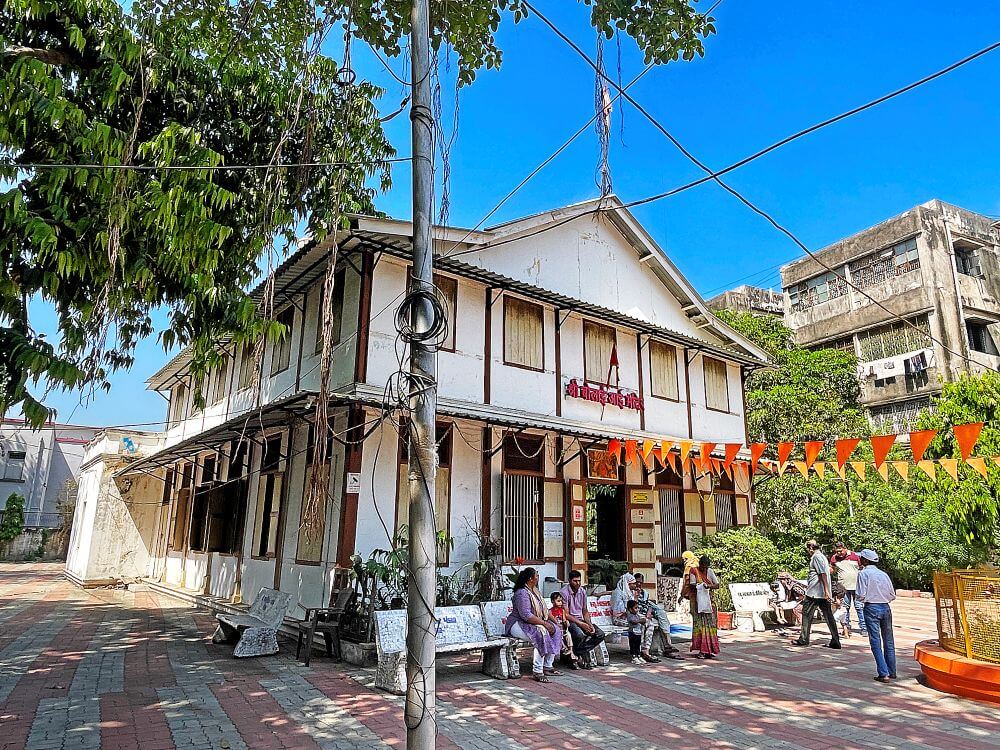
The only temple in Gujarat dedicated to Bolai or Bolhai Mata, a primordial mother goddess, is located in Vadodara. This temple was established about 150 years ago during the time of the Gaekwad princely state. The temple’s architecture bears a distinctly Marathi influence and many Marathi families in Vadodara revere Bolai Mata as their family deity. Devotees believe that speech-related issues in children are cured by visiting this temple, so many parents bring their children here seeking divine blessings.
According to tradition, the original shrine of Bolai Devi is located near Wade-Ghode village (now known as Wade-Bolhai) in Pune district, Maharashtra. This site is mentioned in the renowned book ‘Myth and Reality – Studies in the Formation of Indian Culture’ by celebrated mathematician and historian Dr. D. D. Kosambi. He identifies Bolai as a mother goddess, likely the ancestral deity of a pastoral tribe. The temple in Wade-Ghode was built during the Peshwa era and it is noted that the Gaekwad rulers of Baroda provided annual grants to it. The Gaekwad family originally hailed from Dawdi-Nimgaon in Pune district, indicating a long-standing devotion to this goddess.
As per legend, Maharaja Khanderao Gaekwad II (r. 1856 -1870) was a regular visitor to the Bolai Mata temple in Wade-Bolhai. However, due to poor health and administrative responsibilities, he was unable to travel there later in life. One night, the goddess appeared in his dream and instructed him to build her temple in Vadodara itself. It is believed that Bolai Mata’s original shrine in Vadodara was near Leheripura Gate and the current temple was constructed on the present site and consecrated by the Maharaja.
was a regular visitor to the Bolai Mata temple in Wade-Bolhai. However, due to poor health and administrative responsibilities, he was unable to travel there later in life. One night, the goddess appeared in his dream and instructed him to build her temple in Vadodara itself. It is believed that Bolai Mata’s original shrine in Vadodara was near Leheripura Gate and the current temple was constructed on the present site and consecrated by the Maharaja.
Set within a spacious compound, entry to the temple is through an iron gate, with paved flooring and boundary walls on all sides. A flagpole stands before the temple. The structure comprises a sabhamandap (assembly hall), antechamber (antaral) and garbhagriha (sanctum). The  sabhamandap resembles a grand two-storeyed Peshwa-era wada with sloped roofs on both sides and a simple wooden entrance door. Above the doorway, a grilled ventilator (jal vatayan) holds an image of the goddess.
sabhamandap resembles a grand two-storeyed Peshwa-era wada with sloped roofs on both sides and a simple wooden entrance door. Above the doorway, a grilled ventilator (jal vatayan) holds an image of the goddess.
The spacious sabhamandap is built largely of wood, with multiple vertical windows. The central ceiling section is open, bordered by a wooden-railed balcony. A large image of Bolai Mata adorns the front railing, flanked by ascetics in a prayer pose and lions, considered the goddess’s vahana (vehicle). Images of other deities and saints like Sant Ramdas, Sant Tukaram and Sant Dnyaneshwar are also displayed. A notable feature is a painting of Shiv’s family in the style of Raja Ravi Varma. Additionally, there are paintings depicting key events from Chhatrapati Shivaji  Maharaj’s life, including Shivaji Maharaj taking blessings from Jijabai and Sant Tukaram, Performing aarti of Goddess Bhavani, Conversing with his subjects and his grand coronation ceremony.
Maharaj’s life, including Shivaji Maharaj taking blessings from Jijabai and Sant Tukaram, Performing aarti of Goddess Bhavani, Conversing with his subjects and his grand coronation ceremony.
The doorway to the sanctum is ornately carved, with a vermilion-coated idol of Ganesha above. Inside, on a marble pedestal within a silver canopy, resides the idol of Bolai Mata, coated in vermilion and richly adorned with garments and ornaments. The goddess is in tandala form (a divine warrior pose), with arms adorned with vajra-like ornaments and a large lion sculpture is placed below her. A bed for the goddess is placed in the sanctum and the bedsheet is changed daily. The sanctum has a simple shikhara in the urushringa style.
Devotees can have darshan of Bolai Mata at this temple from 8 in the morning until 12 noon and from 5 in the evening until 8 at night. Only priests are allowed inside the sanctum. Many devotees offer vows (navas) for children with speech impediments. Sundays and Tuesdays are the most crowded. Various festivals are celebrated throughout the year. On Gudi Padwa, a traditional Gudi is hoisted outside the temple with shehnai music in the evening – a tradition continuing since the Gaekwad era. Gaekwad royal family members often visit the temple during auspicious occasions like weddings.
Navratri festival is celebrated here with great enthusiasm. During this festival, the Ghatasthapana (sacred pot installation) is performed in the temple. Various programs are organized for all nine days. The goddess is decorated differently each day. Every night at 8 o’clock, a grand aarti takes place. During this festival, garba, devotional songs, and Mahashtami havan (fire ritual) are conducted. Additionally, on the auspicious day of Champashashti, the wedding ceremony of Khandoba is celebrated with great joy. On this day, the goddess’s palanquin is carried from the temple to the nearby Khandoba temple. Not only the Marathi community but also the Gujarati community participates enthusiastically in this ceremony. The meat-eating devotees of this goddess are forbidden from eating goat meat. They can only eat mutton from sheep. This is called Bolai’s mutton.



